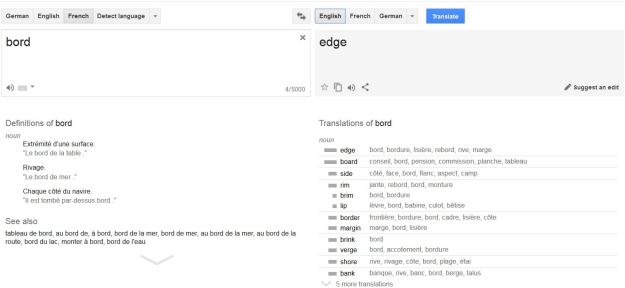My English, French and Swedish are all strong and I studied them at the university, but German, Italian and Spanish are languages I haven’t studied since high school. I have a university degree in translation and I worked as a professional translator for some years, but for the past 15 years I’ve been more of a communications professional. I am the Managing Director of a national non-governmental organization and my job consists mostly of communications.
Rich use of Google Translate
I’ve been using Google Translate for many years now. Not in translation work, of course, but for a variety of other things. First of all, I use it to help me make sure I understand texts that are in languages I am not fully fluent in. I read articles, newspaper stories and research papers that have to do with my industry and are in a variety of languages. When I come across a passage I’m not sure I understand, I google-translate it into my native language of Finnish and also into English (usually both, not sure why…maybe curiosity? Or because I love languages?) I also want to know what similar organizations to mine are doing around Europe so I find myself google-translating web pages or other documents to be able to read them.
Sometimes I use the tool to help me when I have to write something in Swedish, which I struggle with a bit. I might write a piece and test it out in Google Translate to make sure I got the phrasing and spelling right. I also test it in regular Google to see if it’s a common way of expressing what I’m trying to express.
I guess the funny thing is that my most frequent use of Google Translate is not really for its translation function. I most often use it as a dictionary. I don’t have a good electronic dictionary at my disposal and I’m a bit lazy about looking things up in books. So I either google the word or use Google Translate to find the meaning. I don’t really look at the translation but down below, where they give dictionary-type information. Here’s an example:

I like that it gives me multiple suggestions for a translation. I couldn’t ever see myself simply taking the 1 translation it gives in the box and using that. More context helps me make sure I understand.
This also works very well as a thesaurus, a bilingual one at that. It gives you optional synonyms in both languages. And one more thing, a feature I noticed just this year! The megaphone icon at the bottom of the word boxes? That is a pronunciation audio tool.
These kinds of language tools are included in many online dictionaries in different languages, but this is an easy option for multiple languages. Quick.
Oh, and I don’t know if you’ve noticed or not, but they want people to help develop Google Translate. I’ve done some volunteering there, mostly in English since that’s the easiest. You click through expressions and words and see if they’re correct or not. It’s kind of a game and helps to develop it. It’s fun.
Double-checking
Google Translate is hardly ever the only thing I use to verify the meaning of a text; normally I double-check it some other way. Even though it’s just for my own use, I work hard to get a good translation.
First of all, I only use it with languages I know well or at least a little. By comparing the original text and the translation, I know enough to know if the translation is something it’s supposed to be. I would never use it with languages like Arabic or Chinese because I would have no way of knowing how ‘right’ the translations are. I also try out translations with different language combinations, often including English somewhere. Because I have background knowledge on how machine translation works, I know that it works best when English is one of the languages used.
Another way I verify things is by putting them into regular Google. If I can see the same phrase and how it’s used in different contexts, then it can help me fully understand it. Usually when this happens it’s because I’m reading things that are not as familiar to me, like academic or technical texts.
The question of machine translation
I don’t go around recommending the use of machine translation to other people, no. Most often that’s because people need a translation for a text they want to give to someone else or publish. Then I recommend that they use a human translator, of course, because that is what is needed. I think it’s important to make sure people understand that. Another reason I don’t do it is that, if I were to recommend it to someone outside of the language industry, I can’t be sure that person understands the limits of machine translation.
If someone asks me for advice on using it, say they just want to understand a short paragraph, then I tell them it is useful for that if they understand the risks involved. But I’ve never recommended it as such.
When I first started using machine translation it was a bit of a shameful thing. The attitude in the translation community was definitely negative. I didn’t dare tell people I was using it. Nowadays it seems more acceptable for the purposes I use it for. I suppose in earlier years, up to 2010, people were afraid that machine translation would take all the work from translators and eventually they wouldn’t be needed. But now I think people understand it’s just a tool that can’t do everything we need humans to do. I noticed the shift in attitude sometime around 2014 or 2015. It was discussed in conferences in a different way and people were much more interested in the topic.




